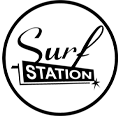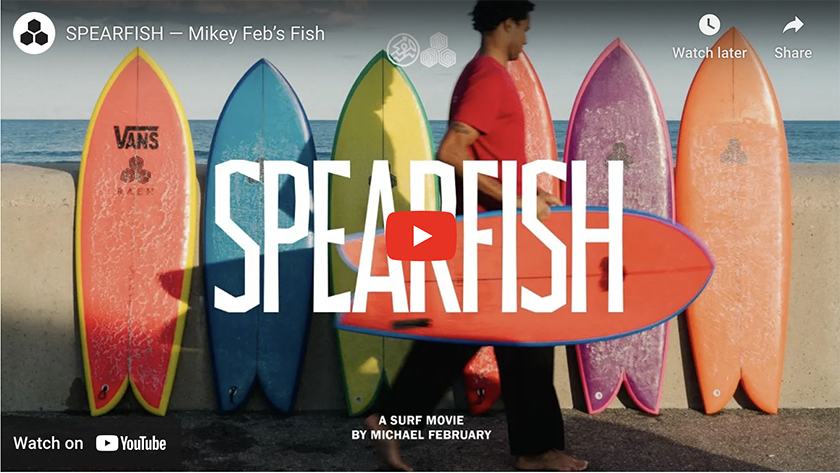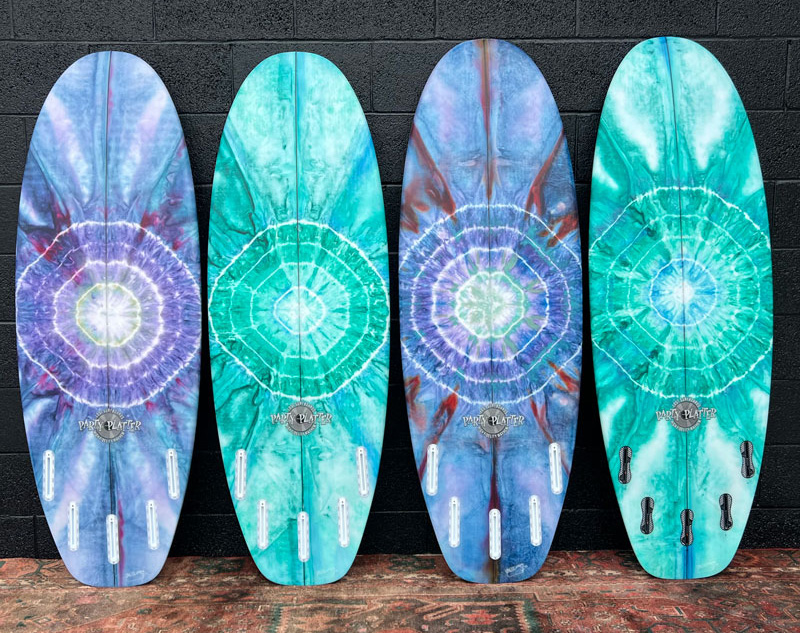A comparison of surfing meccas’ coronavirus responses
Written by: Darby Moore
Let me state the obvious: this past year has been wrought with uncertainty. Let me state the obvious one more time: 2020 is a year that we will never forget. For many of us, it will be remembered as the year the beach died. (Cue the Don McLean ballad that’s bound to be stuck in your head all day.)
All jokes aside, the growing threat of the coronavirus pandemic threw the world into a state of disarray. Government officials around the globe scrambled to control the spread of the virus in their communities, declaring state of emergency orders that closed businesses, schools, and in some cases, beaches. Falling in line with the polarizing effect of the coronavirus, these decisions sparked debate. While some believed that sunshine and saltwater were beneficial in killing the virus, other residents applauded beach closures.
But what’s the real effect of shutting down beaches during a pandemic? Surfers around the globe asked themselves: is it responsible or even safe to surf during times like these?
With no clear answers to these questions, surfing meccas around the world took starkly different approaches to restricting the sport during the pandemic. Two of the most extreme responses came from Hawaii and Puerto Rico. On one hand, the Hawaiian government has always permitted activities including surfing, swimming, walking and running on their beaches. On the other hand, Puerto Rico’s government implemented strict constraints, going so far as policing beaches and handing out hefty fines for surfers entering the water.
Unable to contain our curiosity, we reached out to a few of our shop friends currently living on these two islands to learn more about day to day life in both Hawaii and Puerto Rico. Combining their testimonies with resources available from the Center of Disease Control, here is what we learned.
Surfing during a pandemic: Hawaii
To gain some firsthand insight on how the birthplace of surfing is handling beach closures, we reached out to John Begley. Currently a resident of the North Shore of Oahu, Begley is a life-long surfer who has visited the state since 1989.
“Here, it’s the beginning,” Begley explained. “This is where surfing started for the whole world. It’s a national…I can’t think of the right word to use.”
Listening to Begley racking his brain on the other side of the phone, I interject. “Almost like a national sense of pride?” I say.
“Yeah, it’s like a pride, exactly,” he agrees. “Pretty much when everyone else in the world was getting cut off and wasn’t allowed to go surfing, we were allowed to surf. You were allowed to walk on the beach and go in the water, to run, and to exercise. You aren’t allowed to lay out and get sun or to congregate. This is all until the end of May.”
Though residents are permitted to surf throughout this ordeal, the local government has put stringent isolation measures into effect for travelers. There is a mandatory two week quarantine in place for anyone arriving on the island. If this is not obeyed, the consequences can be serious.
“The thing is, the minute you land here, you have to be on lockdown. You’re not allowed to leave the house, you’re not allowed to go surfing,” Begley shared. “Even though they don’t look like police, there are officials out there watching to make sure that you obey the quarantine after landing. If you don’t, you can either fly back to wherever you came from, or you can sit in jail. The only reason they’re putting people in jail now is because the government found people would break the quarantine, and then break, it again and again.”
So what effect has this approach had on Hawaii’s number of co-vid cases? As of the morning of May 13, there were 635 cases of the virus in the state, according to the Hawaiian Department of Health, Disease and Outbreak Control (DOCD). By comparison, Florida has 41,923 confirmed cases at this time. Respectively, 1 in every 83,287 Hawaiians have died as a result of the virus, while in Florida, 1 in 11,461 have died.
But this isn’t to say that Begley hasn’t faced his own challenges while the island works to control the disease.
During the throes of the pandemic, Begley faced his own crisis while surfing the world-renowned break at Sunset Beach. While surfing the impressive, well overhead surf, he was hit with a lip of a wave that severely pinched a nerve in his neck.
“I felt the wave hit me and I knew that something was wrong,” he said. “I came right back up but I was stuck in the impact zone and I couldn’t move my right arm. My board was dragging me back and under the water again. I almost drowned.”
After a half hour long fight to the sand with just one functioning arm, Begley slid on his flip flops and made his way to the emergency room. Making his way to the hospital on foot in extreme pain with his right arm dangling, this is when Begley was informed that he would not be allowed inside the emergency room as a result of co-vid restrictions on admittance.
“I just didn’t know what to do. I sat on the curb fuming, in so much pain with nowhere to go. I just couldn’t believe it,” Begley said. “To make a long story short, it turns out that I’d fractured the ball of my humerus when I finally made my way to a doctor for an MRI.”
Following Begley’s injury, in the way of Murphy’s Law, the big island was hit with some big swell.
“When I hurt myself on April 9th, we had the best waves we’ve had all season. Pipe was firing,” Begley cried. “Everywhere was blowing up and unfortunately I couldn’t go surfing. But before that, the best thing about this whole situation was that in March when we had really good waves, it was only people that you knew out in the water.”
Leave it to the Hawaiians to take a local’s-only approach to things, even when it comes to dealing with a pandemic. But hey, with a confirmed number of coronavirus cases a fraction of our own state’s, can we blame them?
Surfing during a pandemic: Puerto Rico
On the other hand, Puerto Rico has taken a vastly different approach to controlling the virus in relation to surfing, closing its revered beaches entirely. We reached out to surfer, surfboard shaper and resident of Isabela, Greg Jaudon, to learn more about life in paradise without surfing. Jaudon has lived in Puerto Rico for over 40 years, having joined the United States Coast Guard during his senior year at St. Augustine High School in 1979. After attending boot camp for the service, he was shipped out to a Puerto Rican duty station in October of that year and hasn’t looked back.
“From my conversations in-person and online with island friends, I hear a mixed bag of attitudes and views on the situation,” Jaudon explained. “People are taking it seriously but it’s a way different vibe than post Hurricane Maria. Then, you at least knew the storm had left and one could get on with rebuilding. With this virus, nobody knows when it’s going to be over. Nobody can give an answer either, so it’s a lot of uncertainty.”
Living in close proximity to world-class breaks the likes of Wilderness, Gas Chambers, Jobos and Middles, Jaudon has been adapting to the total ban on surfing, fishing and diving. (With the exception of licensed commercial fishermen.)
“I personally have not had any saltwater time since the governor’s executive order went into effect on the 15th of March. I’m fortunate that my board shop is located on a property close to my home,” said Jaudon. “We’ve been working on boards and other shop projects, but not much is coming through. Just a few orders here and there and repairs.”
As of the morning of May 13, according to the Center of Disease Control, Puerto Rico had at least 2,200 cases of coronavirus on the island. There have been 114 corona-related deaths, resulting in 1 death per 27,297 residents. These numbers continue to rise despite stringent isolation measures being taken by the government.
“Authorities are patrolling by sea, land, and air. There are reports of boats and helicopters chasing people out of the water while officials are calling people in from shore,” Jaudon said. “People are out and about in town, but nowhere near normal numbers. Grocery stores are well stocked, we don’t have any shortages other than manufactured face masks. Masks and gloves are required when entering businesses.”
Without a certain end in sight, Jaudon looks forward to a time when the beaches are reopened and tourists can return to the surf and the sand.
“In my opinion, the best way to help Puerto Rico is simple: come hang with us. Everybody wins. I know that we get a lot of bad press with government corruption, but you will be hard pressed to find a better, easier place to go. It’s family friendly, accepts the US dollar, no passport is required, and you can still double park in front of the liquor store and not get a ticket. It’s a perfect blend of chaos and order.”
We’re hoping that our Puerto Rican friends will soon find themselves finding more order in the chaos so that they can keep searching for the perfect wave and the coldest Medalla.








